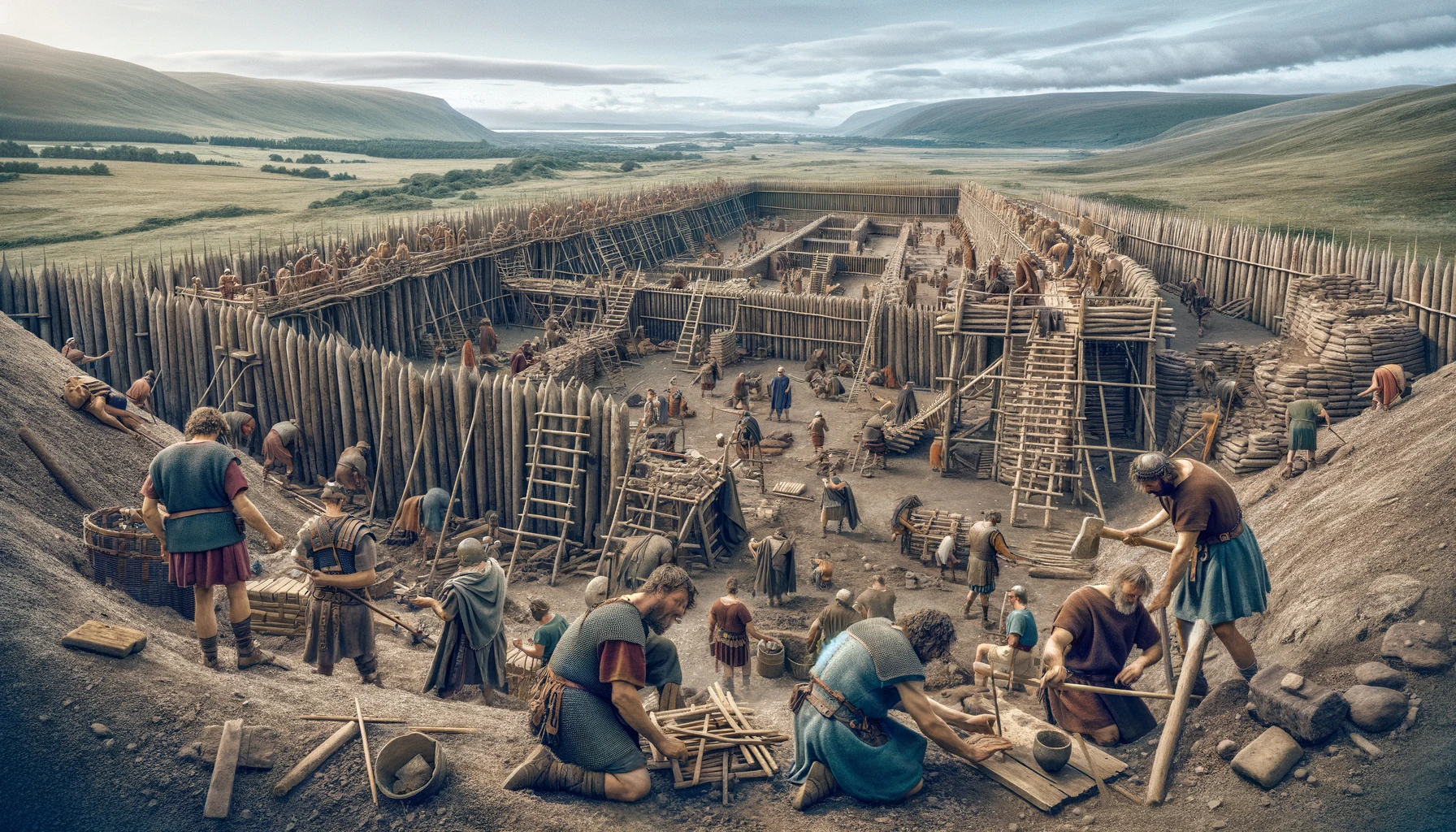Tacitus recorded that Agricola’s fourth year was devoted to consolidating territories already conquered (Agricola, 23.1). Regardless of whether Titus had officially ordered a halt, securing control over lowland Scotland was a prudent move, especially considering the insights gained from the Boudiccan uprising. Agricola likely remembered these lessons.
Moreover, if Titus intended to fully conquer the region, positioning the legions closer to Caledonia was logical. Stationing them in forts among the subdued Brigantes was not strategically beneficial. As Tacitus suggests, there was already progress in this direction with fortifications built in the previous season, implying further expansion in the following season. Tacitus hints that Britain’s geographical features like the Clyde and Forth, linked by a narrow strip of land and augmented by Roman garrisons, could have formed a natural boundary, effectively isolating the enemy.
By this time, Agricola’s forces had covered a vast area. Some scholars speculate that the Votadini chieftain might have been an ally of Rome, similar to the Eleven British Kings who surrendered to Claudius or Cartimandua of the Brigantes. However, the Flavian dynasty appeared less enthusiastic about client kingships. For instance, Vespasian annexed the Commagene kingdom into the Syrian province due to mistrust of its king (Josephus, Jewish War, 7.219). It’s likely that both the Votadini and Selgovae, despite possibly providing hostages in Agricola’s second year, were compelled to host and supply Roman troops.
Ptolemy mentions ‘Kouria’ among the Votadini towns (Geography, 2.3.7), likely referring to Corbridge (Coriosopitum), where a 10-hectare supply base was established at Sandhoe Fort (Beaufront Red House). Similarly, ‘Trimontion’ among the Selgovae (Geography, 2.3.6) corresponds to the fort at Newstead (Trimontium), named after the Eildon Hills. This fort served as a central hub for marching armies. The main Roman road, later Dere Street, passed through these and other strategically placed forts to minimize the local economic burden. Tacitus notes Agricola’s reforms to end the practice of delivering supplies to distant, inaccessible locations (Agricola, 19.4).
The exact locations of Agricola’s garrisons along his proposed boundary between the Clyde and the Forth remain uncertain. It’s an oversimplification to assume that the builders of the later The Antonine Wall simply reused Agricola’s sites. Evidence of Flavian occupation in forts south and north of the Antonine Wall’s line suggests a complex network. For example, the fort at Elginhaugh, possibly built in Agricola’s third season, raises questions about its role in Agricola’s frontier plans.
